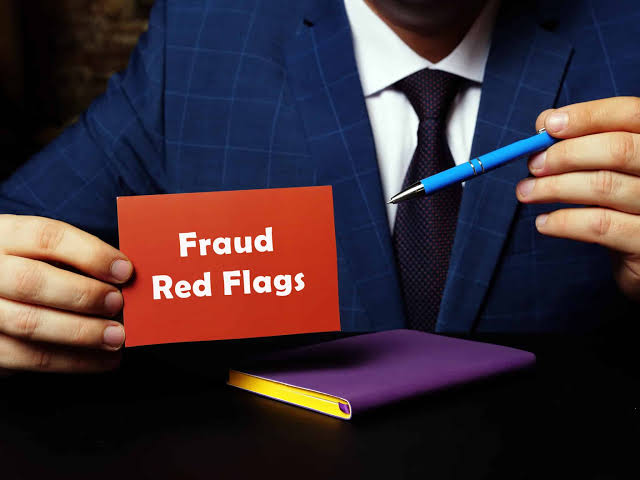
A forensic audit is a specialised inquiry of a company’s financial records to detect probable fraud. Unlike standard audits, forensic audits delve below the surface, using painstaking approaches to acquire evidence and identify:
- Fraud includes embezzlement, asset misappropriation, and other financial crimes.
- Misconduct includes accounting mistakes, regulatory violations, and management wrongdoing.
- Disputes: Provide evidence for judicial actions involving commercial issues.
Top Red Flags for Forensic Audits
Financial statements, although important for assessing a company’s health, may sometimes conceal red signals indicating deeper issues. Listed below are the top red flags that forensic auditors look for in financial statements, providing insights into how these concerns might be discovered and resolved.
Unexplained variations in financial ratios.
Financial ratios are critical for evaluating a company’s performance, liquidity, and profitability. However, considerable variations in these ratios over short periods of time might be cause for concern. For example:
- Gross Margin Decline: A significant decline in gross margin may suggest increased manufacturing costs, reduced sales prices, or inventory manipulation.
- Account Receivable Turnover: A fall in this percentage might indicate an issue with collections or the possibility of fraudulent sales.
Any unexpected trends in these ratios might indicate financial fraud or operational problems. If an accounting company in Dubai detects unexpected deviations, it will investigate further to determine the underlying causes and if they indicate to fraud or mismanagement.
Frequent Financial Statement Adjustments
Frequent or large changes to financial statements might be an indication of underlying problems. These modifications can include:
- Accounting Policy Changes: Changing accounting procedures or policies on a regular basis may be used to manipulate financial results and conceal actual performance.
- Large Year-End Adjustments: Significant modifications may be made towards the conclusion of the fiscal year in order to achieve financial objectives or expectations.
Forensic auditors pay particular attention to these modifications, analysing their reasoning and effect to determine whether they are valid or intended to hide financial reality.
Unusual Transactions and Relationships.
Transactions that depart from the norm or include unique connections may raise red flags. They include:
- Related party transactions: Transactions between the firm and its leaders, family members, or related companies may sometimes be used to divert funds or create deceptive financial appearances.
- Off-balance-sheet transactions: Transactions that are not disclosed on the balance sheet but have an influence on financial health may indicate an effort to conceal liabilities or inflate asset values.
Auditors have to undergo a complete forensic audit for these transactions to verify they are carried out at arm’s length and correctly recorded, as they may represent efforts to influence financial results.
Insufficient disclosure of contingent liabilities and risks.
Contingent liabilities and risks should be reported in the financial statements so that any future commitments may be clearly understood. A lack of proper disclosure may indicate:
- Unreported Legal Disputes: Failure to disclose current legal difficulties or future liabilities may mislead stakeholders about the company’s financial soundness.
- Unrecorded Environmental or Regulatory Risks: Companies may minimise or disregard possible environmental or regulatory penalties and liabilities.
Forensic audit will be required to review these disclosures to ensure that all possible risks and liabilities are properly stated and accounted for.
Suspicious Employee Behavior.
Employees who suddenly demonstrate indicators of affluence that do not correlate to their wage levels may be engaging in misbehaviour. Also, when questioned about specific financial records or practices, evasive behaviour may indicate possible misconduct. Furthermore, pressure from customers or management to speed transactions or circumvent regulations may indicate underlying concerns.
Regulatory and Compliance Issues
Noncompliance with appropriate rules causes substantial worry. Previous results from external audits that revealed substantial flaws or deficiencies may need a forensic audit. Furthermore, any continuing legal concerns or conflicts, particularly those involving financial malfeasance, may demand a forensic investigation to determine the scope of the problems.
High turnover in Finance Functions.
Frequent changes in finance staff, especially higher-level roles such as CFOs or accountants, may indicate instability or underlying difficulties in the financial management system. This may need a thorough audit to detect any possible fraud or mismanagement.
Adverse Media Reports
Negative media coverage of an organisation may suggest risk factors for money laundering, fraud, or other misbehaviour. Constant monitoring of media relating to customers or partners might detect possible problems, indicating the need for more study.
Monitoring customer transactions for anomalies.
Transactions with abnormal patterns, such as rapid high-volume transfers, anonymous sender or recipient information, or payments from high-risk areas, may indicate money laundering or fraud. A thorough examination of these transactions may involve a forensic audit to identify any anomalies.
Excessive use of cash
The usage of currency has declined dramatically in the digital age, particularly in industrialised economies. Businesses that operate solely in cash, particularly ones that should logically accept electronic payments, raise severe red flags. High cash transactions may mask money laundering, making it difficult to identify funds’ origins.
Conclusion
Forensic audits are critical for ensuring financial integrity and tackling fraud or mismanagement in organisations, particularly in countries like the UAE with rigorous financial requirements.Early detection of red flags may safeguard an organization’s reputation and minimise costs.




